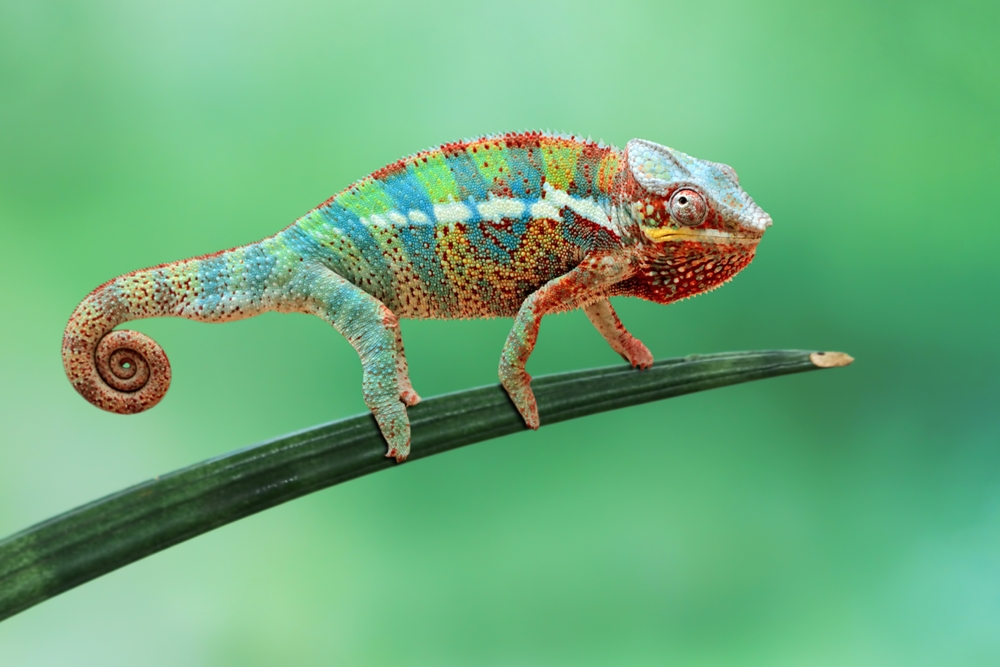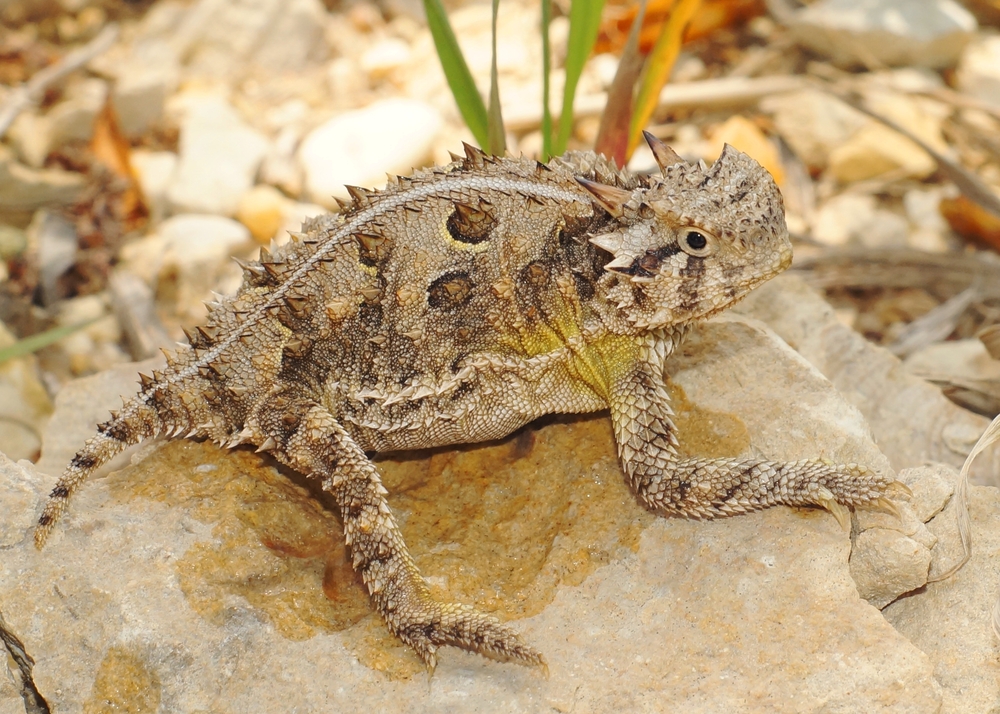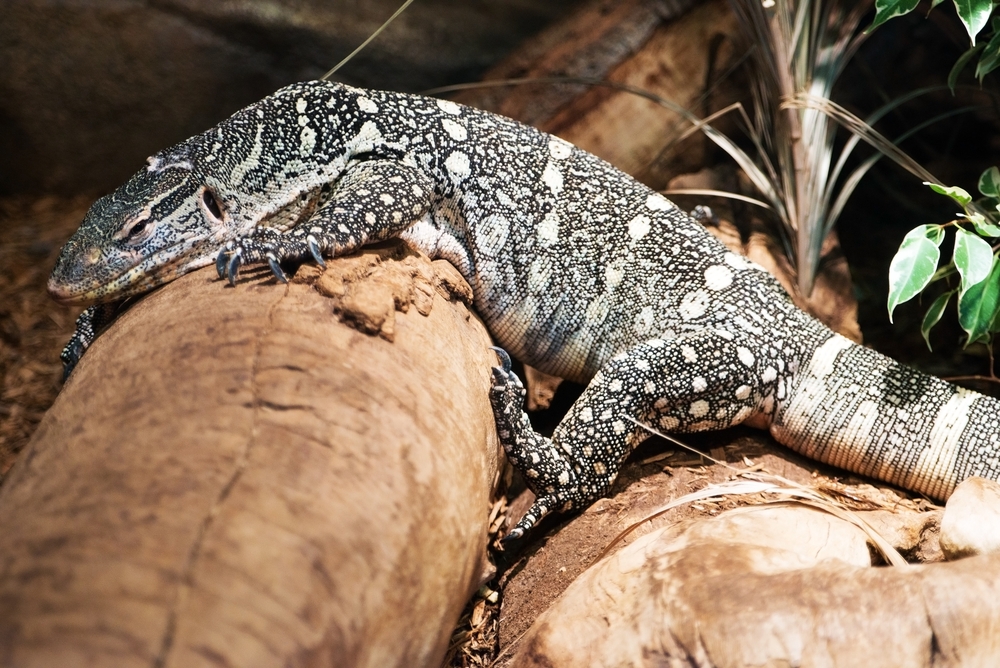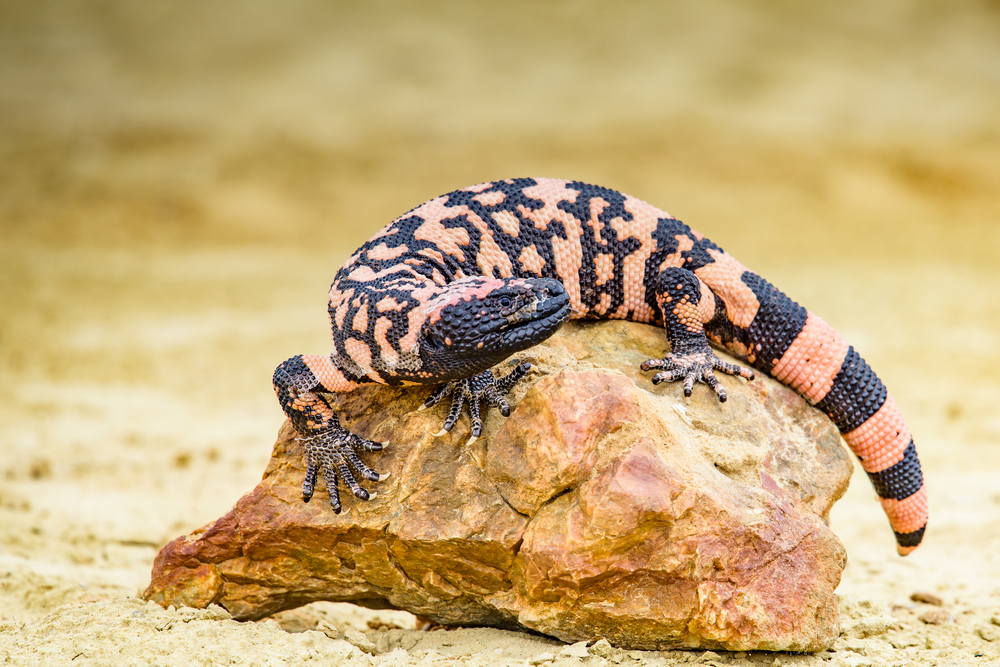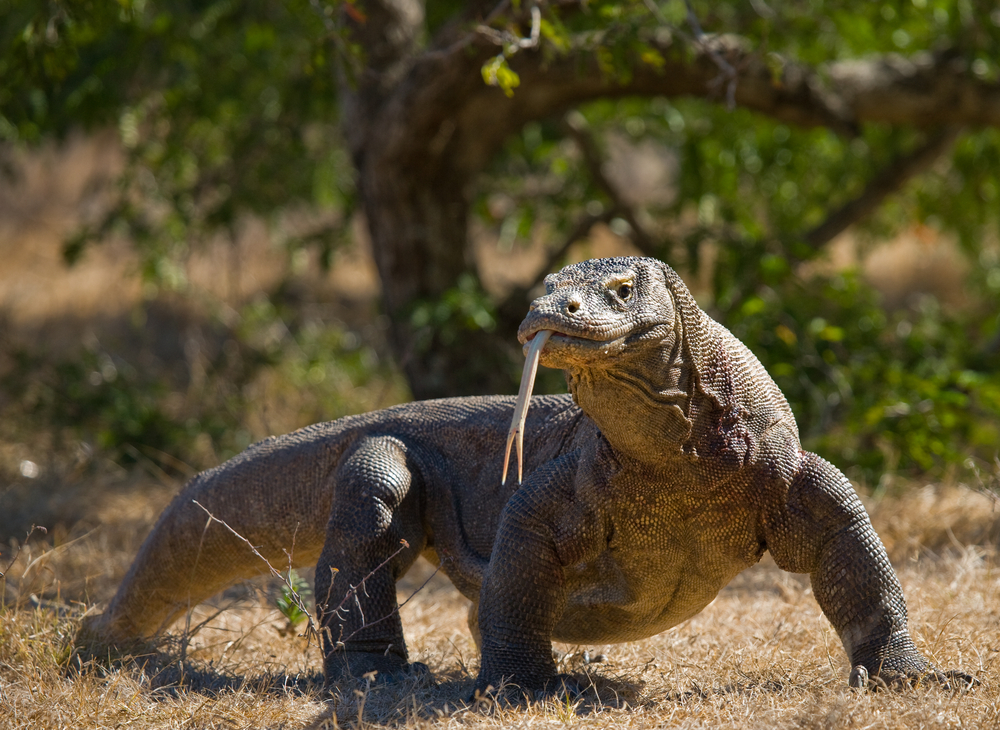Physical Characteristics
Panther chameleons are visually striking reptiles native to Madagascar, celebrated for their dazzling color variations and remarkable adaptations for arboreal life.
Coloration:
Panther chameleons are known for their vibrant and variable coloration, which differs significantly by region (locale)and sex. Males display brilliant hues of green, red, blue, orange, yellow, and turquoise, often with bands or spots. Females are more subdued, typically brown, peach, or pink with subtle markings.
Skin Texture:
The skin is granular and slightly rough, covered in tiny, overlapping scales. The skin can change color through the manipulation of specialized pigment cells called chromatophores, influenced by temperature, light, mood, and social interactions.
Head:
They have a distinctive casque (helmet-like ridge) at the back of the head, more prominent in males. Eyes are large, conical, and independently mobile, allowing for nearly 360-degree vision.
Tongue:
Panther chameleons possess an extraordinarily long, projectile tongue, which can extend up to 1.5 to 2 times their body length to capture prey with precision.
Limbs and Feet:
Their zygodactylous feet (two toes pointing forward, two backward) are highly specialized for grasping branches. Each foot acts like a pincer, providing a strong grip on narrow perches.
Tail:
They have a prehensile tail, which acts as a fifth limb to aid in balance and climbing.
Size:
-
Adult Male Length: 14 to 20 in (35 to 51 cm), including tail
-
Adult Female Length: 8 to 14 in (20 to 35 cm), including tail
Weight:
Sexual Dimorphism:
Males are larger, more colorful, and more robust than females. Females remain relatively drab and are smaller, with less pronounced head casques.
Panther chameleons’ specialized anatomy—such as their color-changing skin, gripping feet, and projectile tongue—makes them exceptionally adapted to life in Madagascar’s humid forest canopies.



































































